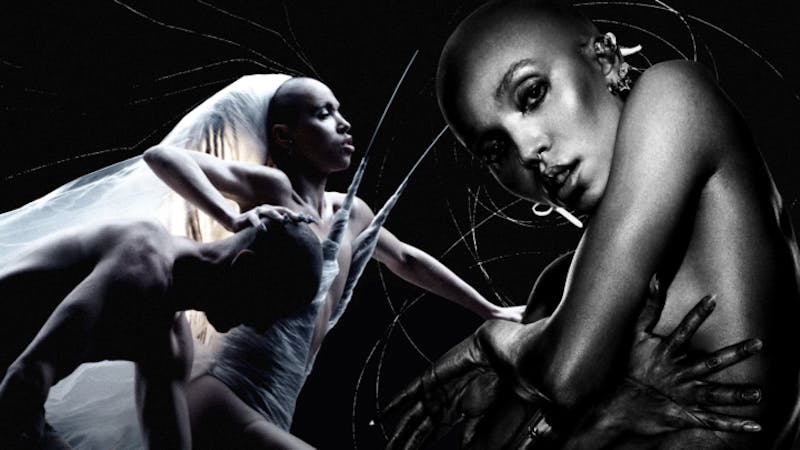The extravagant combination of Baroque Revival architecture, rich laughter, and clinking wine glasses paints a picture: one relaxing evening filled with lively classical music. The lights suddenly dim as four beautifully dressed individuals, each holding stringed instruments, enter the stage. From the tuning of their instruments to the ambiance of the theater, any stranger to the band would expect to be serenaded by intricate classical pieces crafted by 18th century composers of whom they’ve never heard.
A modern pop fan, indifferent to the classical genre, would rarely find themselves in those velvet–colored theater chairs. This apathy originates from the lack of serious classical music in mainstream social media and radio. Even further, classical music may be difficult to navigate for beginners, often associated with lavish occasions rather than everyday listening, and (while undeniably fulfilling in other ways) lacks relatable lyrics and catchy melodies.
However, as the “1, 2, 3, 4” kicks off the two–hour–long show, the first three notes are enough to realize that this is not “Toccata and Fugue in D Minor” by Bach, but “Bad Guy” by Billie Eilish. The adaptation of the famous pop anthem to strings feels seamless, as though it was always meant to be played by violins, violas, and cellos. As the show progresses, the crowd has no trouble recognizing every song from its first notes. There is a unique excitement in hearing familiar songs reinterpreted in such a sophisticated way, adding layers of complexity that are often absent from the original arrangements.
Vitamin String Quartet is a string ensemble that performs classical renditions of modern pop music. Best known for their work in Bridgerton, the group’s musical variety ranges from smash hits like Chappell Roan’s “Good Luck, Babe!” to Broadway hits like “Mamma Mia.” They've even branched out to R&B with their most recent cover of “Pink + White” by Frank Ocean. These unique covers open the classical genre to a wider audience—tailored not just to classical music fans, but equally suited for pop lovers also.
Although their discography features hits recognizable to all, the average pop enthusiast may fail to encounter the group's work simply because they don’t know where to look. However, the idea that pop and classical music are separate realms is a misconception. In fact, the boundary between the two is not as rigid as it may first appear. These same listeners might not realize that classical music influences are already woven into their favorite pop songs. Many contemporary tunes directly sample or are inspired by classical compositions, like Billy Joel’s “This Night” and Beethoven’s “Pathétique 2nd Movement” or Lady Gaga’s “Alejandro,” inspired by Vittorio Monti’s “Csárdás.” This subtle, indirect impact is revealed in each song's structure: the chorus, orchestration, and dynamics all have classical roots.
As long as mainstream music fans approach VSQ with an open mind, there is a strong chance they’d genuinely start to enjoy classical music. I’m not, however, asking you to start bumping Mozart—you’ll likely find your favorite pop songs in VSQ’s assortment. The musicians employ a delicate balance between respect for the original material and their signature classical style. Each song is reimagined, yet the essential emotional core is never lost. The subtle string emulations of lyrics, often paired with incredibly affecting or playful arrangements, transfer vocal fervor into musical notes, supplementing spoken word with raw instrumental. VSQ’s arrangement of the ascending bridge in Olivia Rodrigo’s “vampire,” for example, is so suspenseful and angsty that it perfectly captures the heartbreak in Rodrigo’s actual voice. You’d think the instruments themselves dated a sociopathic liar and are now wailing in regret.
VSQ's producers find arrangements for songs you would never expect could be classical–ified. Sure, their rendition of “Cheap Thrills” by Sia plays on the piano and strings already present in the song, but the synthesizers, guitars, and drums in “Espresso” by Sabrina Carpenter are completely transformed into the sharp, soothing sound of violins, viola, and cello—a transformation that is easily admirable.
But why listen to classical renditions over the original? The benefit goes far beyond new additions to your playlist. In a phone interview with VSQ cellist Derek Stein, the musician half–jokes that the No. 1–most–heard sentiment he gets from fans is gratitude for getting them through school. VSQ’s work captures the stimulating effect of classical music (which has been scientifically proven to boost brain performance and lower stress) while omitting distracting production and sing–along lyrics, creating the perfect listening experience for an enjoyable yet concentrated study session.
So, the next time you put on your noise–cancelling headphones and crack open your chemistry textbook, try opting for the VSQ version of your favorite song. Perhaps you’ll catch yourself subconsciously bobbing your head along to the harmony.






